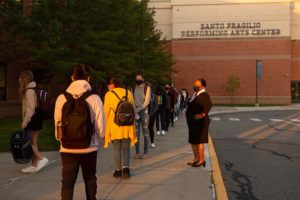Addressing Attendance

As a result of the global pandemic, young people’s school attendance habits may have changed. Their social emotional needs may have changed, their sense of belonging may have diminished, or they may have taken on jobs or child care duties that have shifted their ability to be in school every day on time. Trends in Connecticut may illustrate broader trends across the country. There, significant attendance data was collected and analyzed across the state and showed that Black and Latinx students had rates of absenteeism significantly higher than students of other races; the same held true for English learners and students with disabilities. If schools and districts don’t put measures in place to foster students’ attendance, opportunities for learning could be severely impacted, especially for our most vulnerable students, including those from marginalized populations.

Teachers, principals and district leaders shared with us the different ways they’re thinking about attendance challenges in their communities. Many noted that schools need to think more broadly about attendance, beyond one specific team that does specialized work with chronic absenteeism. Attendance is connected to relevant curriculum, engaging classrooms and deep relationships. Strong education leaders are working on how to strengthen all three of those elements to ensure that students want to come to school.
Equity Priorities
To ensure our most vulnerable students aren’t hit hardest by changes in attendance habits, district and school leaders must:
- Examine root causes of new (and old) attendance patterns to understand how school and district policies exacerbate or ameliorate attendance challenges
- Build meaningful relationships with students and families
